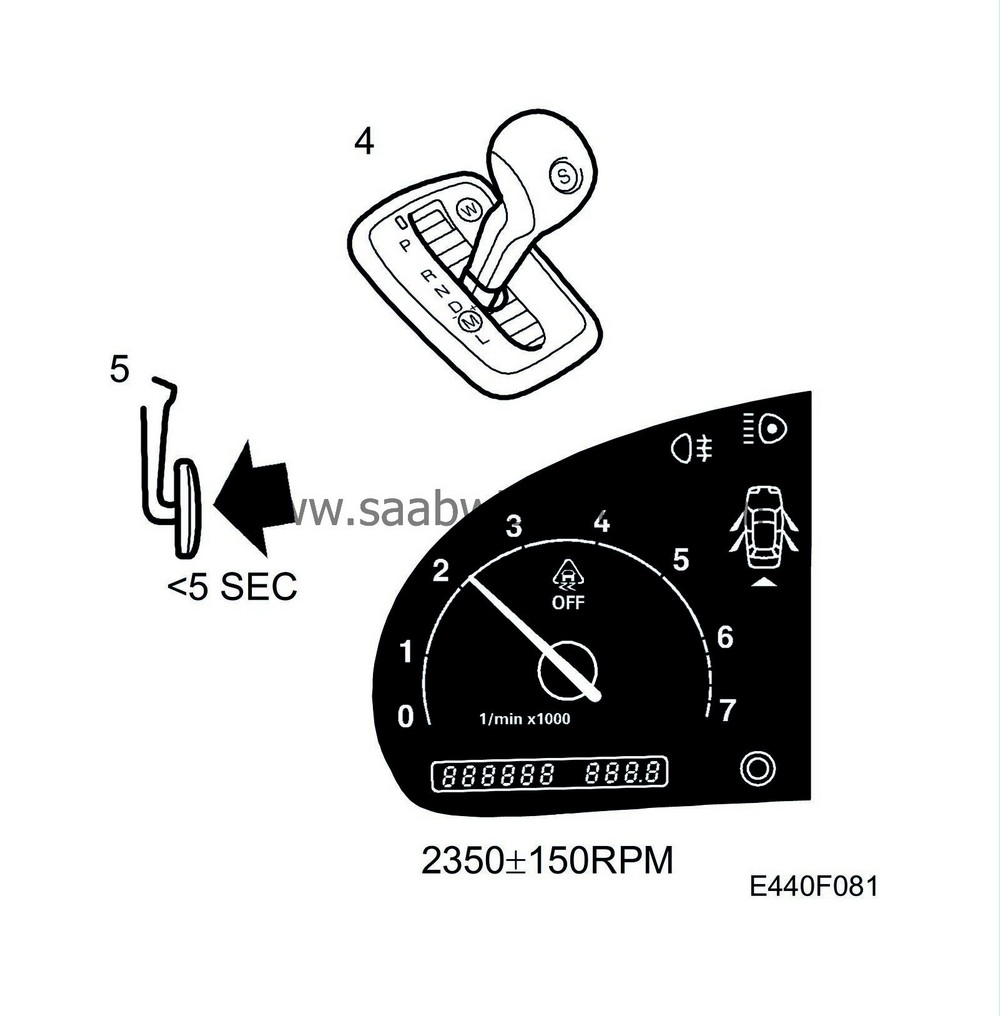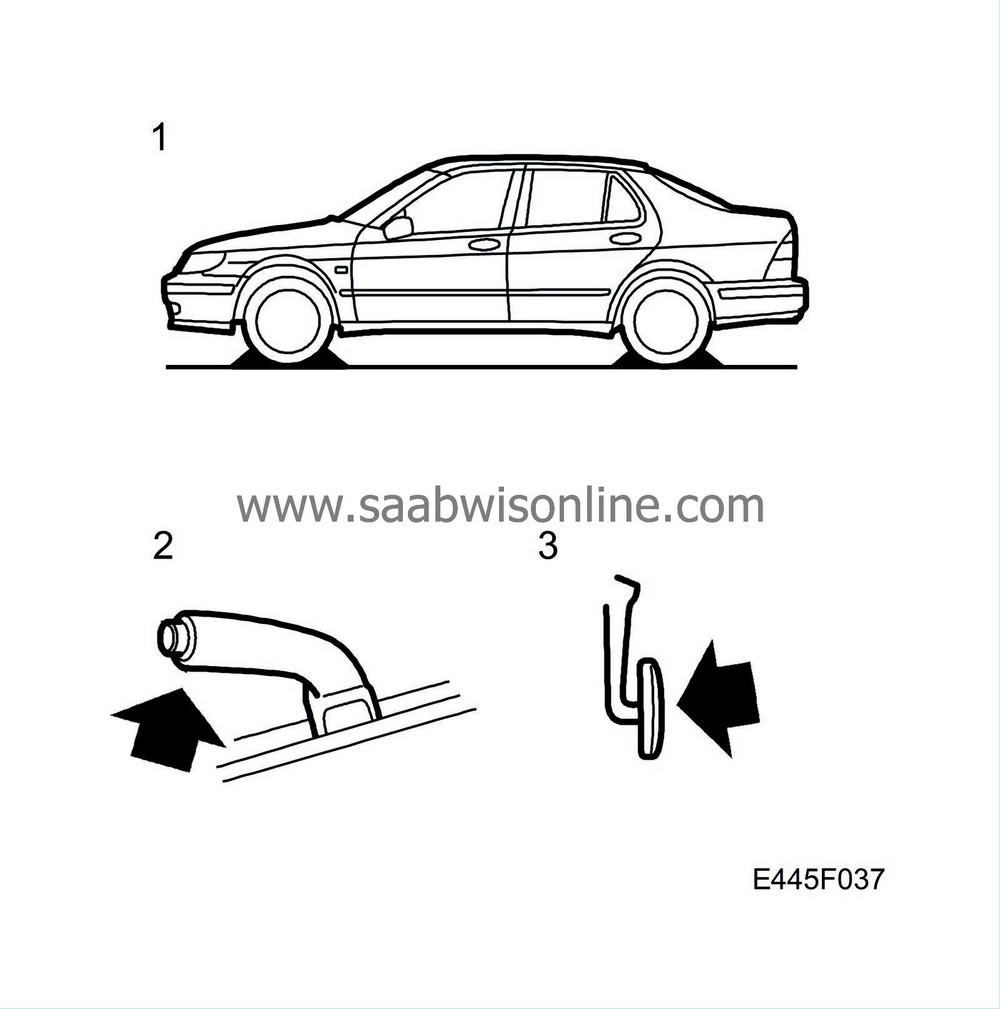Checking the stalling speed
|
|
Checking the stalling speed
|
This test indicates the general condition of the engine and transmission by checking the maximum engine speed in positions D and R. To check the stalling speed:
|
1.
|
Ensure that the transmission has reached working temperature, (50° - 80°C). Switch off the A/C and headlights.
|
|
2.
|
Put chocks under all 4 wheels.
|
|
3.
|
Apply the handbrake fully.
|
|
4.
|
Press the brake pedal hard.
|
|
5.
|
Start the engine and move the selector lever to position D.
|
|
6.
|
Give full gas and quickly read off the highest engine speed. "Stall" speed will be 2,250 - 2,450 rpm for B205E, B235E/R, B308E and 2,600 - 2,700 rpm for D223L.

|
Important
|
|
Do not run for longer than 5 seconds when testing as the oil temperature can rise above the permitted level. Wait at least 1 minute between tests.
|
|
|
|
|
7.
|
Repeat the test with the selector lever in position R. Stalling speed should be the same as above.
Result of the stall test
|
Cause of fault
|
Lower engine speed than stated above with both "D" and "R"
|
- Reduced engine performance
- Fault in the torque converter (free wheel)
|
Higher engine speed than stated above only with "D"
|
- too low system pressure
- Fault in the SLT
- Fault in clutch C1 (slipping)
- Fault in free wheel F2
|
Higher engine speed than stated above only with "R"
|
- too low system pressure
- Fault in the SLT
- Fault in clutch C2 (slipping)
- Fault in brake B3 (slipping)
|
Higher engine speed than stated above with both "D" and "R"
|
- too low system pressure
- Fault in the SLT
- Fault in brake B5 (slipping)
- Fault in the transmission fluid pump
- Fluid leak in one of the "D" or "R" circuits
- Blocked fluid filter
|
|




